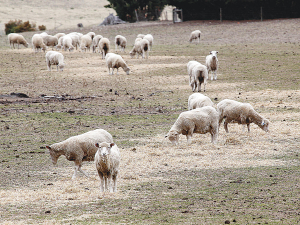Early drought fears ease in Hawke’s Bay, but caution remains
Fears of a serious early drought in Hawke’s Bay have been allayed – for the moment at least.
 Destocking may seem like the best option for some Marlborough farmers, says farmer Warwick Lissaman.
Destocking may seem like the best option for some Marlborough farmers, says farmer Warwick Lissaman.
Seddon farmer and Marlborough drought committee member Warwick Lissaman says total destocking and going fishing may seem like the best option for some of Marlborough’s drought-hit farmers.
“But as an industry, we can’t do that. As a whole community, we can’t do that. We have to fight through,” he told Rural News.
Speaking following a recent well-attended drought meeting at Ward, Lissaman says farmers’ needs varied case by case. For some, it’s about personal support and relationship issues, and for others very much just animal feed and water.
He adds that some have too many animals for the feed they have, and some have feed but no water because stock water dams have had no infill for two years.
Farmers are facing extremely low pasture growth rates – zero to five kg of dry matter per hectare per day – so can’t “just fiddle” with the stock numbers, he says.
“You can’t just come down to 50% and still make it work.”
Lissaman says many farmers were at between 40% to 60% of their expected stock numbers at this time of the year, but will still be short of feed if there’s no rain-fed growth in May and June.
“You can’t de-stock the whole East Coast region by 80% for example and place those animals anywhere, to then bring them back. There just isn’t anywhere for them to go.”
For Marlborough, the worst-hit area is the Flaxbourne River catchment around Ward.
Lissaman says his own farm, near Seddon, is on the cusp of the really dry area. However, he says the drought hit home to him about a week ago when he realised some of his driest slopes had gone a grey colour, meaning the dry grass cover was now so thin that he was seeing the soil underneath.
“I haven’t had to graze those areas and I still haven’t grazed them but they’ve gone grey without me grazing them.”
In a normal summer they would go golden or bleach to white but then go green when the rains came, he says.
A New Zealand dairy industry leader believes the free trade deal announced with India delivers wins for the sector.
The Coalition Government will need the support of at least one opposition party to ratify the free trade deal with India.
Primary sector leaders have welcomed the announcement of a Free Trade Agreement between India and New Zealand.
At Pāmu’s Kepler Farm in Manapouri, mating has wrapped up at the across-breed Beef Progeny Test.
More than 150 people turned up at Parliament recently to celebrate the 20th anniversary of Horticulture New Zealand (HortNZ).
Biosecurity New Zealand says Kiwis should continue to keep an eye out for yellow-legged hornets (Vespa velutina) over the holiday season.

OPINION: The release of the Natural Environment Bill and Planning Bill to replace the Resource Management Act is a red-letter day…
OPINION: Federated Farmers has launched a new campaign, swapping ‘The Twelve Days of Christmas’ for ‘The Twelve Pests of Christmas’ to…